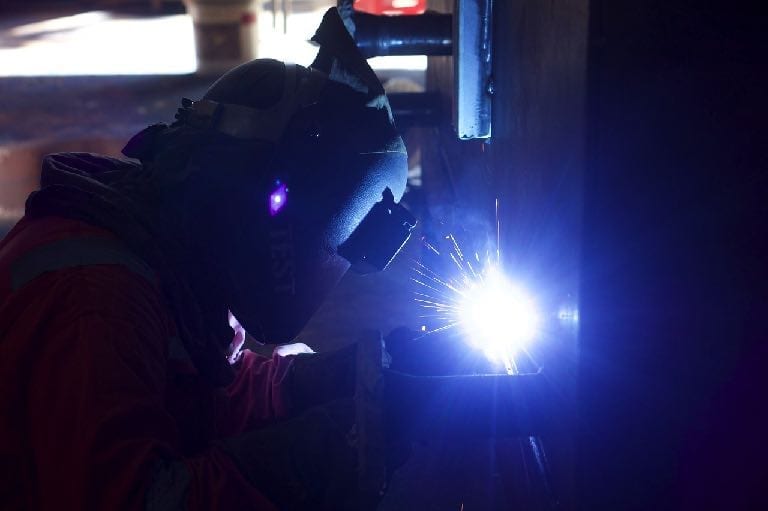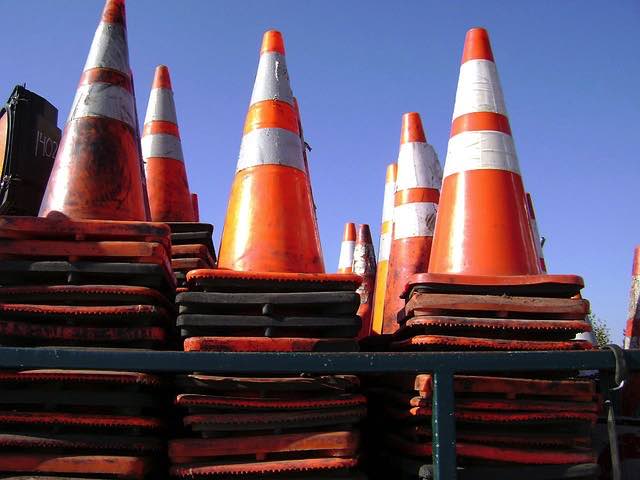Working on any site without the appropriate safety equipment is horribly dangerous. The presence of heavy plant in operation or construction makes it even more so.
Without suitable safety equipment, accidents can end in permanent injury or even death.
Every worksite is a little different. Each environment poses different challenges and dangers demanding different kinds of safety equipment.
But some safety equipment is obligatory across the board.
Here are our top 7 onsite safety equipment must-haves:
Personal Protective Equipment (PPE)

PPE refers to anything designed to minimise the risk of injury to workers. PPE is worn by workers and can include safety boots (steel capped), face masks, gloves, goggles, hard hats, bright clothing, respirators and harnesses. All of these are mandatory pieces of safety equipment.
Physical keep out zones (bollards, fencing and witches hats)

Bollards, fencing and witches hats help keep workers separated from dangerous areas or heavy plant which can cause injury or death in the case of an accident. If your worksite contains a variety of environments, of which some are extremely hazardous, this safety equipment will keep your people away from the possibility of danger.
Flashing lights
Beacons, lamps, strobes, or light bars are all forms of flashing lights. This form of safety equipment is easily attached to vehicles, fences or bollards and are a great solution for drawing the eye of the onsite worker, when they’re not paying attention at 100%.
Beepers and buzzers
Beepers and buzzers function similarly to flashing lights in the sense that they’re designed to draw attention. Attached to heavy vehicles like excavators or forklifts, they draw the eyes and ears of workers to give workers a heads-up as they pass by.
Mirrors

Blind spots are the enemy of any worksite’s functional efficiency. If heavy vehicles are taking turns with no idea what’s around the corner, there’s bound to be a collision. Mirrors, when placed correctly, can help both pedestrians and drivers see around corners to avoid accidents.
Painted walkways and pedestrian crossings
Without having walkways clearly defined on your worksite, you may find that many of your workers will take it upon themselves to decide where the footpaths are. In unfortunate cases, this can lead to injury or death if a worker has walked into a particularly hazardous area.
By defining where the walkways are and where the crossings are, you’re keeping your workers out of harm’s way. You’re maintaining control of your worksite’s safety.
Pedestrian safety warning systems
Pedestrian safety warning systems work by alerting drivers of heavy plant such as forklifts, cranes or excavators when they’re about to collide with something or someone.
Sensor tags are worn by pedestrians or placed against a structure. When a vehicle with a sensor comes within a certain radius of the tags, the alarm sounds off to the driver. The driver has a chance to hit the brakes or deactivate their machinery before an accident occurs.
Do you have the right onsite safety equipment?
You may have many of the bits and pieces of safety equipment mentioned on this list already but do you have a pedestrian safety warning system?
If you’re interested, we have the perfect solution. It’s already used and trusted by Rio Tinto, BHP, Boral, Chevron and many others.
Get in touch by calling us on +61 (2) 4355 4554 or use our contact form.
Preliminary consultation is FREE.
